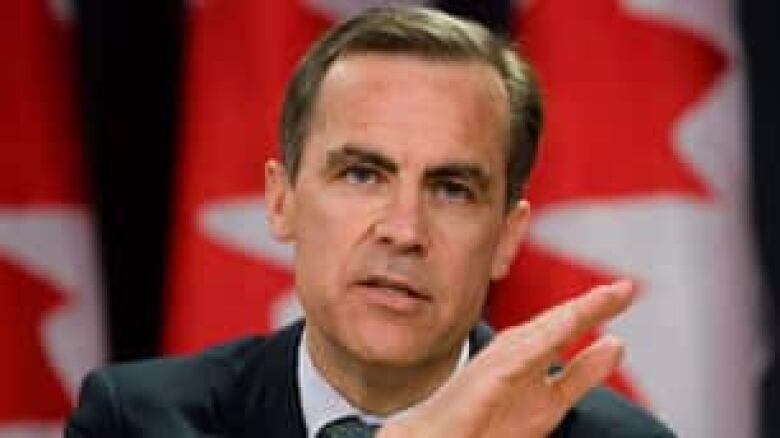Interest rates: The gamble in Canada's debt payment plan

Lost in that discussion, however, is the effect of rising interest rates could have on Canada's balance sheet.
Indeed, the cost of servicing Canada's growing debt could soar in coming years. That is because of the combination of looming interest rate hikes and the increased accumulated debt due to the country's record $56 billion deficit.
"As debt rises and interest rates begin to pull off their lows, public debt service charges will increase," said TD Bank economists Don Drummond and Derek Burleton in an October 2009 study of Ottawa's fiscal situation.
The real question is how quickly such an increase will be felt on the federal government's books.
"Debt service charges will go up a bit when short-term interest rates rise in a few months time; but [overall] debt charges will still be falling," said Nick Rowe, an economics professor at Ottawa's Carleton University.
Canada loses interest

Subsequent federal governments had cut the country's mountain of debt from a peak of $562.9 billion in the fiscal year 1996-97 to $457.6 billion by 2007-08.
The $105 billion reduction in borrowing represented an 18.7 per cent drop in total national debt.
Besides the absolute borrowing level, a lower debt also chopped the country's debt load compared to its national income down to an International Monetary Fund estimate of 60.6 in 2008 and debt servicing charges.
The later category - what the government pays in interest payments to institutions and individuals that lend Ottawa money - also fell dramatically over the past 15 years, according to the TD Bank.
"About 24 cents of each revenue dollar went towards public interest costs in the mid-1990s compared to the current figure of roughly 10 cents," said Drummond and Burleton in their October report.
Peaking at $49.4 billion in 1995-96, Canada's debt service payments slid consistently to $30.99 billion by 2008-09. That reduction represented a drop of 37 per cent.
Even more impressive, Canada's interest payments as a percentage of government spending topped out at 29.8 per cent in 1996-97. By 2008-09, that percentage had fallen to 13 per cent, less than 50 per cent of the previous level.
During that period, the virtuous duo of less borrowing - due to the elimination of the federal deficit in the mid-1990s - and lower interest rates have improved Canada's fiscal standing.
A monetary seismic shift

First of all, many governments, including Canada, hiked public spending in an effort to prevent an already-terrible recession from becoming any worse.
In Canada's case, the government of Prime Minister Stephen Harper now expects a budgetary shortfall in the range of $56 billion in 2010.
The country's record deficit in the current year plus the fact that the federal red ink disappear only gradually over the next few years means Canada's debt load, which had been dropping, will start to rise once again.
In his last budget, Finance Minister Jim Flaherty figured that Canada's total debt would hit $535 billion by 2011-12, up from $547.6 billion in 2008-09.
But, his forecast was predicated upon a 2009-10 deficit of $33.7 billion, a figure that Ottawa now agrees was too low an estimate.
Rate hikes
In addition to growing debt, Canada also faces higher interest rates in 2010 and beyond, according to many economists.
The Bank of Canada reiterated its commitment on January 19 to keep the policy rate "at its current level until the end of the second quarter of 2010. We look for rates to rise in Q3," said BMO economists Michael Gregory and Benjamin Reitzes in a February interest rate forecast.
In recent speeches, Mark Carney, the governor of the Bank of Canada, has emphasized the need for the central bank to squash any hint of inflation.
Most economy watchers interpreted those sentiments to mean the Bank is likely to increase record low interest rates in the new few months.
When?
A small initial hike in interest rates might only have a marginal effect on the public finances.
Besides, the Canadian government has borrowed money by selling bonds that are maturing now but were issued 10, 20 and even 30 years ago, when interest rates were much higher, Rowe said.
As a result, Ottawa will be refinancing a portion of its debt at lower interest rates, saving the government debt servicing money, he said.
Still, higher interest rates and a large debt level were key factors that caused Canada to slash spending in the mid-1990s to balance the books.
And Ottawa would be loathed to engage in a similar exercise in the next few years, because of the debt servicing hit that Canada could take from higher interest rates now, analysts said.












_(720p).jpg)


 OFFICIAL HD MUSIC VIDEO.jpg)
.jpg)



























































































